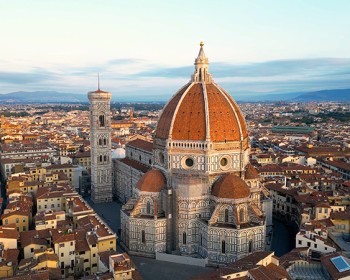Despite these uninviting names, Civita di Bagnoregio is considered one of the most beautiful villages in Italy and every year it is visited by hundreds of thousands of people who come from all over the world to admire its timeless appearance and the magical atmosphere that it can be perceived walking through its narrow alleys.
Perched on a hill, threatened by landslides and soil erosion, to reach it you have to cross a 200 meter long bridge that leads from the nearest hill to the gateway to the historic center. Civita di Bagnoregio has only 11 inhabitants due to the structural precarious condition that has emptied the town. In recent years, however, several houses have been renovated and in the summer they host artists and foreign vacationers and today Civita is experiencing a new phase of development, thanks to tourists who come every year to admire it but which at the same time made it necessary for forms of controlled access. so as not to damage the fragile balance of the ancient structures.
The town that dies is located in the center of the Valle dei Calanchi, between the two valleys called Fossato del Rio Torbido and Fossato del Rio Chiaro, which were once the access road that, from the Tiber valley, led to Lake Bolsena .
The current appearance of the village dates back to the end of the Middle Ages and has remained almost intact since then, giving this place the fascinating aura of a place where time has stopped. However, it has led to a progressive emptying of the country. Already in the mid-nineteenth century only a handful of people lived there, while most of the inhabitants had moved to the Municipality of Bagnoregio.
Porta Santa Maria is today the only access to the village and, passing under it, you can admire the splendid decorations of lions that crush some human figures: they are the symbol of the inhabitants of Bagnoregio who crush the tyrants. To access the center of Civita, visitors must pay a small entrance fee that allows the municipal administration to carry out the restoration and stabilization work and keep the village open to visitors.
As soon as you enter the village, you will be enchanted by its timeless appearance, with the medieval structures embraced by the narrow alleys that climb the hill like a labyrinth. The historic center is an attraction in itself, but to see the best of this locality, you can visit the noble palaces of the Colesanti, Bocca and Alemanni built by important families from Viterbo during the Renaissance.
In particular, inside Palazzo degli Alemanni you can visit the Geological and Landslide Museum, an interesting museum institution which, bringing together a wide range of disciplines, from geology to seismology to archeology, illustrates the particular relationship between Civita and the its territory, with great attention to the issue of hydrogeological instability.
The entire urban center is oriented according to the main square of Civita, Piazza San Donato, where the main church of the town is located, built on the site of an ancient Etruscan temple. The church is a magnificent example of sixteenth-century Viterbo architecture and inside you can admire a splendid wooden crucifix made in the Flemish area at the end of the sixteenth century.
It is worth "getting lost" in the narrow streets and exploring the most secret ravines to admire the most evocative views without following a precise itinerary, letting the beauty of this place guide you to discover it.
One of the most spectacular points in the center of Civita is the Belvedere, a small square directly overlooking the precipice of the badlands to the north of the town, from where you can admire a wonderful view over the entire Valle dei Calanchi.
The main events are the Palio della Tonna, Civit'Arte, the Chestnut Festival, the Living Nativity. But you can always visit the city via numerous group tours or private tours!











